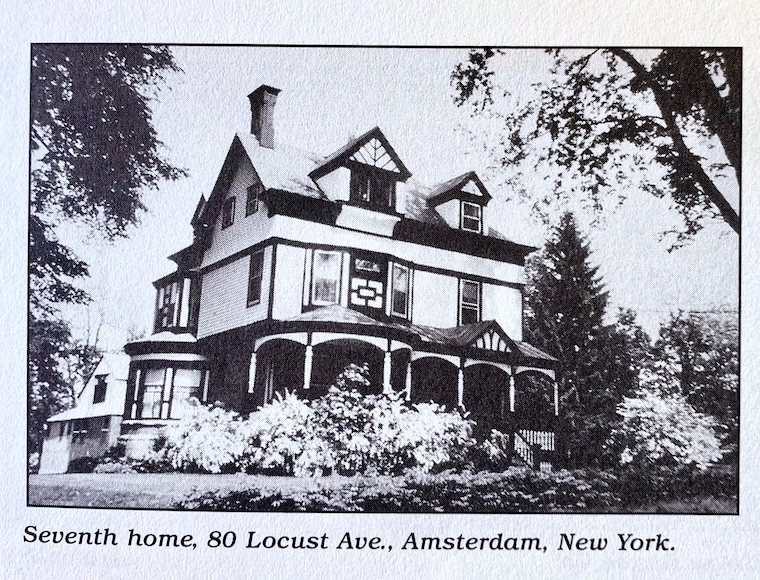Grandly ornamented and punctuated by its black and white paint scheme, the stately Victorian house on Locust Avenue served as the gathering place for a host of my most favored childhood memories. It was here where my family would religiously assemble for every Thanksgiving and Christmas Day, here where we would honor Suzie’s birthday each June ninth, and here where graduation parties and weddings would eventually take place. For my childhood, it was a place of magic and enchantment, carrying the familiarity of a home-away-from-home, but tinged with enough mystery and secrets to always be slightly out of reach.
Behind the carriage house there were the rumored wanderings of a group of chickens. Further out along the forest’s edge was a stand of rhubarb, and beyond that a few stands of Jack-in-the-Pulpit, purportedly discarded from the front bed. The formal gardens had the carved out remnants of a little pool – a water feature that had long ago dried up and never been re-filled. The hot and dry days of summer made it inhospitable, but I loved imagining its former incarnation, and would lurk there beneath the drooping boughs of an evergreen, even when Suzie had long tired of being outside.
While there was nothing secret about the gardens, they held a mystique that has never dissolved, even all these years later when I re-examine them in my mind. There is always something more to be found around each curve, something in the shade of a grand elm, or beneath the gnarled maze of grape vines that threatened to engulf their arbor. It was a beauty and sublimity that carried on the mockorange-perfumed breezes of summer, or the sweet wafting of the otherwise inconspicuous fringe tree. The peony beds and their heavy flowerheads of fragrant majesty got all the credit, but I knew were quieter forces at work perfuming that wondrous air.
All of these wonders were secondary and peripheral to the real magic and mystery of the grounds: the Ko house, and all its Victorian majesty. Like the central locale of ‘Meet Me In St. Louis’ years before I ever felt the pull of Judy Garland, the Ko home was the hub of so much of my social world. Clearly that wasn’t much since I was just a child, but to a child it was everything.
Much of its Victorian charm had been preserved and left fully intact – there were stained-glass windows, red-velvet-embossed wallpaper, fireplaces both upstairs and down, and a warm-hued wood that ran throughout the house. With all the wood, and some dark carpeting, it should have felt dim and dark, but somehow it never did. Not in my childhood days. For all of its multi-storied, sprawling expanse, it felt intimate and cozy – a testament to the family that occupied it, as well as all the artful objects and unique items that populated the shelves and corners.
Gnarled cacti and bizarre succulents stood rising out of buckets and ancient pottery. On the mantle of the dining room fireplace, glass jars of ginseng roots suspended in some preservation liquid stood sentry, their contorted forms a fascinating opportunity for anthropomorphic meanderings. Korean dolls, decked out in the most exquisitely colored dresses of silk paraded behind glass boxes perched above bookshelves. A round bay window, lined with a curved, cushioned banquette for rainy day reading sessions (which I never saw anyone occupy) marked one of my favorite spots in the house. It was in that room that Suzie and my brother and I spent the latter half of a dim evening – on the night we had to stay over because Dad was having eye surgery in Albany. No one would be home to watch us, so Mom packed us up for the Ko house, where we were largely left to Suzie’s entertaining expertise. As worried as we were about our own father, we felt safe in the dark expanse of that room, which would typically be fraught with shadow and menace on such a night.
As the memory recedes, I try vainly to hold onto the warmth that came from the Ko home, and I still find it in Suzie and Elaine and the Ko boys. It wasn’t about a place or a space – it was about the good things that happened there. It’s different for me since I was mostly an onlooker and visitor – there for the happiest of celebratory days – and perhaps our childhoods give too much power to place and circumstance…
Back to Blog

